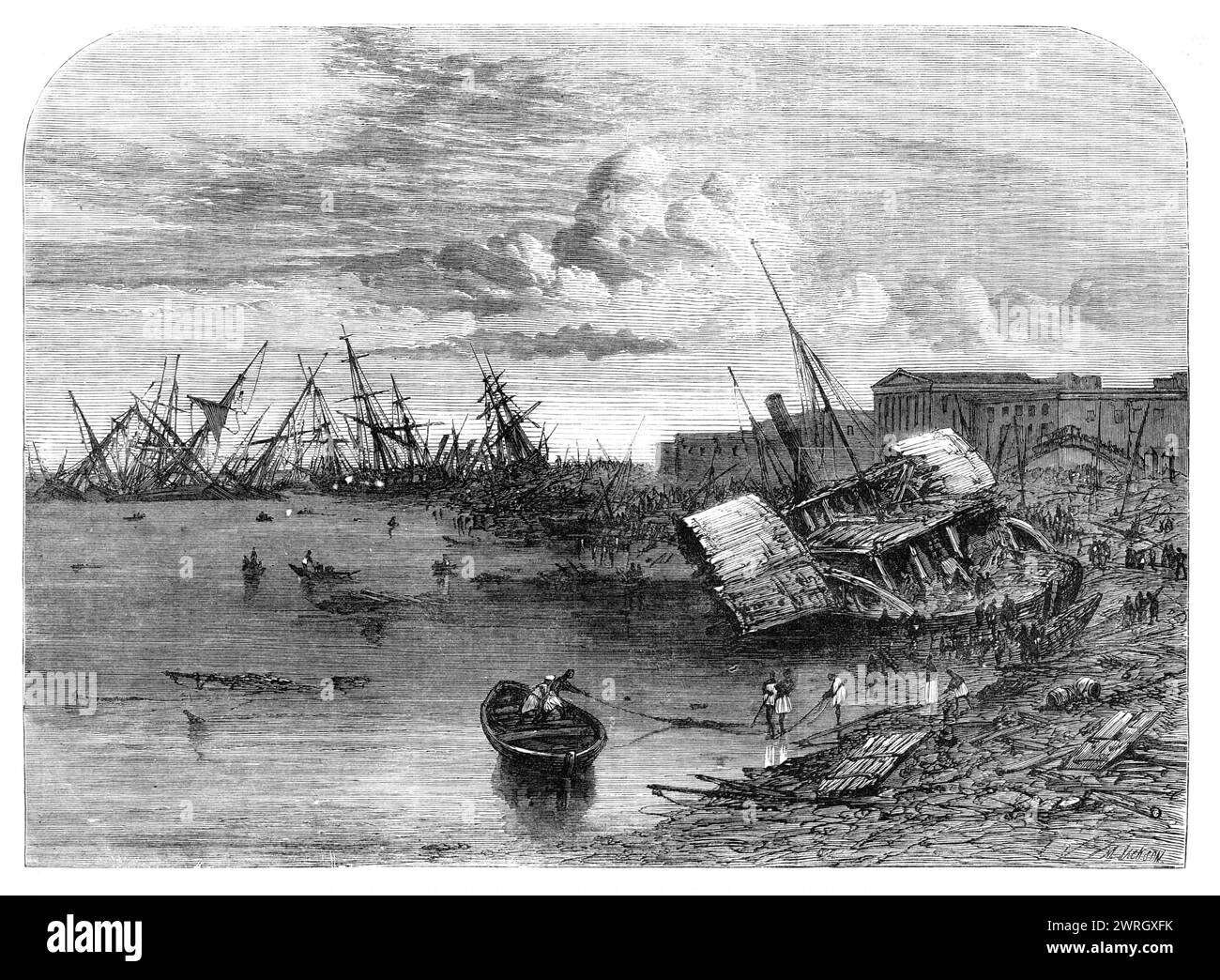Effects of the cyclone at Calcutta on the 5th of October, 1864. Engraving from a photograph by Mr. F. Fisk Williams '...of the devastation on the banks of the River Hooghly...With a noise like distant thunder it came on in two or three minutes, tearing up trees by their roots, carrying off the roofs of the houses, overturning walls and buildings, and heaping up masses of ruin...scarcely a house escaped without injury, while the native huts, especially in the suburbs, were almost all blown down...Of more than 200 ships it is said that only ten were left at their moorings after the storm, the re

Image details
Contributor:
The Print Collector / Alamy Stock PhotoImage ID:
2WRGXFKFile size:
32.1 MB (2.5 MB Compressed download)Releases:
Model - no | Property - noDo I need a release?Dimensions:
3907 x 2868 px | 33.1 x 24.3 cm | 13 x 9.6 inches | 300dpiPhotographer:
The Print CollectorMore information:
This image could have imperfections as it’s either historical or reportage.
Effects of the cyclone at Calcutta on the 5th of October, 1864. Engraving from a photograph by Mr. F. Fisk Williams '...of the devastation on the banks of the River Hooghly...With a noise like distant thunder it came on in two or three minutes, tearing up trees by their roots, carrying off the roofs of the houses, overturning walls and buildings, and heaping up masses of ruin...scarcely a house escaped without injury, while the native huts, especially in the suburbs, were almost all blown down...Of more than 200 ships it is said that only ten were left at their moorings after the storm, the rest having been stranded or sunk. Of these many were loaded with grain for Bombay...Great was the excitement of those on shore who were doomed to witness the agonies of drowning men without the means of rendering them any assistance. The distance was too great to throw a rope...There is reason to fear that several hundred lives were lost with the other European vessels that went down on the river, besides those drowned in the multitude of small native boats...The loss of life in the town and suburbs of Calcutta has been ascertained to be forty-one natives and two Europeans, besides some twenty seriously wounded by the fall of their houses'. "Illustrated London News", 1864.